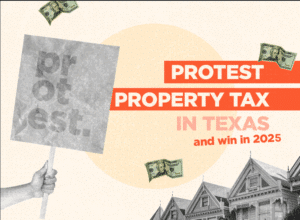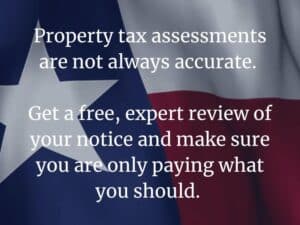Commercial property taxes are a significant operating expense for business owners, often representing one of the largest annual costs for maintaining a property. These taxes are based on the assessed value of your commercial property, such as an office building, retail center, or industrial facility, as determined by your local appraisal district. If the assessment is unfairly high, exceeding the property’s fair market value, you could be overpaying thousands or even millions of dollars each year. Understanding how commercial property tax assessments work, what factors influence them, and how to challenge inaccuracies is critical for business owners to control costs and protect their bottom line. This comprehensive guide provides essential information, actionable steps, and expert insights to help you navigate the complexities of commercial property tax assessments and save money.
Why Commercial Property Tax Assessments Matter
Unlike residential properties, commercial properties are often valued based on their income-generating potential, making assessments more complex and prone to errors. An inflated assessment directly increases your tax bill, reducing profitability. For example, lowering a $5 million assessment by $500,000 at a 2.5% tax rate saves $12,500 annually. Protests can correct overvaluations, fix errors, and ensure fairness, but they require strategic preparation and adherence to strict deadlines (typically May 15th or 30 days from the appraisal notice).
How Commercial Property Tax Assessments Work
Commercial property tax assessments determine the taxable value of your property, which local governments use to calculate your tax bill. Here’s a breakdown of the process:
1. Assessment Methods
Appraisal districts use three primary approaches to value commercial properties, often prioritizing the income approach due to the property’s revenue potential:
- Income Approach: Estimates value based on the property’s net operating income (NOI) divided by a capitalization (cap) rate. For example, a property with $200,000 NOI and a 5% cap rate is valued at $4 million ($200,000 ÷ 0.05).
- Sales Comparison Approach: Compares your property to recent sales of similar properties, adjusting for differences in size, location, or condition.
- Cost Approach: Calculates the cost to rebuild the property, minus depreciation, plus land value. This is common for unique or new properties.
- Key Insight: The income approach dominates for income-producing properties like offices or retail centers, but errors in NOI or cap rates can inflate values.
2. Factors Influencing Assessments
Several factors affect your property’s assessed value:
- Income and Expenses: Higher reported NOI (rents minus expenses) increases value. Inaccurate expense data (e.g., omitting maintenance costs) can overstate NOI.
- Market Conditions: Local real estate trends, vacancy rates, and cap rates impact valuations. A softening market may lower values.
- Property Characteristics: Size, age, condition, location, and zoning affect value. Errors in square footage or misclassified use (e.g., retail vs. warehouse) can skew assessments.
- Comparable Sales: Recent sales of similar properties set benchmarks, but inappropriate comps (e.g., different property types) can distort values.
- Example: A retail center with overstated NOI due to unreported vacancies may be assessed at $6 million instead of $5.5 million, costing $12,500 extra yearly at a 2.5% tax rate.
3. Assessment Process
- Appraisal districts assess properties annually, mailing notices in spring (e.g., April) with the proposed value, property details, and protest deadline.
- Values are based on data from January 1 (or the prior year), including income reports, sales, or inspections.
- Business owners can protest if the value exceeds market value or is unequal compared to similar properties.
Common Challenges in Commercial Assessments
Commercial assessments are more complex than residential ones, leading to frequent issues:
- Inaccurate Income Data: Districts may use outdated or incorrect rent rolls, vacancy rates, or expense ratios, inflating NOI and value.
- Improper Cap Rates: Using a cap rate that’s too low (e.g., 4% vs. 6%) for your property’s risk or market can overstate value.
- Wrong Comps: Comparing your property to dissimilar properties (e.g., a Class A office vs. your Class B building) leads to unfair valuations.
- Physical Errors: Mistakes in square footage, building age, or condition (e.g., ignoring deferred maintenance) increase assessments.
- Unequal Appraisal: Your property may be assessed higher than similar properties, violating fairness principles in states like Texas.
Steps to Challenge an Unfair Commercial Property Valuation
Challenging an unfair assessment requires preparation and evidence. Follow these steps to build a strong protest:
1. Review Your Appraisal Notice Thoroughly
- Why It Matters: The notice details your assessed value, property characteristics, and protest deadline (typically May 15th or 30 days from the notice). Errors or overvaluations justify a protest.
- How to Do It:
- Compare the assessed value to your property’s market value, based on recent appraisals, sales, or income data.
- Check for errors in square footage, building class, occupancy rates, or features.
- Verify the deadline and any exemptions (e.g., economic development incentives).
- Example: A $7 million assessment for your office building seems high compared to a recent $6.5 million appraisal, and the notice overstates rentable square footage by 5,000 sq ft.
- Tip: Save the notice and set a reminder for one week before the deadline.
2. File Your Protest Promptly
- Why It Matters: Filing by the deadline preserves your right to challenge. Missing it locks in the valuation, costing savings.
- How to Do It:
- Obtain the protest form from the appraisal district’s website or office.
- Select grounds like “value is too high” (market value appeal) or “unequal appraisal.”
- Include your proposed value (e.g., $6.5 million based on income data) and a brief explanation.
- Submit online, by certified mail, or in person, paying any fee (e.g., $50–$200, often waived if you win).
- Example: Filing by the May 15th deadline ensures your $8 million assessment protest is processed.
- Tip: File early to gain preparation time, as noted in “Why Deadlines Matter in Property Tax Protests.”
3. Gather Income and Expense Data
- Why It Matters: For income-producing properties, accurate NOI and cap rate data are critical to proving a lower market value.
- How to Do It:
- Compile current rent rolls, lease agreements, and vacancy reports to show actual income.
- Document operating expenses (e.g., maintenance, utilities, management fees) with financial statements or invoices.
- Research market cap rates for similar properties via industry reports (e.g., CBRE, CoStar) or appraisers.
- Calculate your proposed value: NOI ÷ cap rate (e.g., $300,000 NOI ÷ 6% = $5 million).
- Example: Correcting a 10% vacancy rate to 20% and adding $50,000 in expenses lowers NOI from $350,000 to $280,000, reducing value from $7 million to $5.6 million at a 5% cap rate.
- Tip: Use professional accounting records to ensure accuracy, per Texas Tax Protest’s advice.
4. Collect Comparable Sales and Assessments
- Why It Matters: Comps and unequal appraisal data show your property is overvalued compared to the market or similar properties.
- How to Do It:
- Sales Comps: Find 3–5 recent sales (6–12 months) of similar properties (e.g., same class, use, location) via MLS, CoStar, or a realtor. Adjust for differences (e.g., subtract $100,000 for a newer building).
- Unequal Appraisal: Identify 5–10 similar properties with lower assessments using the district’s database. Adjust for variations (e.g., size, condition).
- Present in tables with addresses, sale prices/assessments, dates, and adjustments.
- Example: Three comps sold for $5.8–$6.2 million, and five similar properties are assessed at $5.9 million, supporting a $6 million value vs. $6.5 million.
5. Document Property Condition and Errors
- Why It Matters: Physical issues or data errors (e.g., deferred maintenance, incorrect square footage) reduce market value, justifying a lower assessment.
- How to Do It:
- Take timestamped photos of issues (e.g., outdated HVAC, roof damage) with labeled descriptions.
- Obtain 1–2 repair estimates from licensed contractors on letterhead (e.g., $100,000 for elevator upgrades).
- Provide proof of errors (e.g., a survey correcting 50,000 sq ft to 45,000 sq ft).
- Example: A $200,000 repair estimate for a parking lot and a 5,000-square-foot error ($50 per sq ft) support reducing a $7 million assessment by $450,000.
- Tip: Focus on high-cost issues impacting value.
- Organize Your Evidence Professionally
- Why It Matters: A clear, concise packet respects the limited time of appraisers and Appraisal Review Board (ARB) members (5–7 minutes per case).
- How to Do It:
- Create a binder or digital folder with:
- A one-page summary proposing your value (e.g., “I request $6 million based on income and comps”).
- Income/expense statements, cap rate analysis, and NOI calculations.
- Tables for comps and unequal appraisals.
- Photos, repair estimates, and error proofs.
- Maps showing comps’ locations.
- Use visuals (e.g., charts, highlighted maps) to emphasize key points.
- Bring extra copies for the appraiser, ARB, and your records.
- Create a binder or digital folder with:
- Example: A binder with NOI data, three comps, and a repair estimate secures a $500,000 reduction from $7 million.
- Tip: Lead with your strongest evidence (e.g., income data), as advised in “Secrets to a Successful Property Tax Protest.”
7. Engage in the Informal Review
- Why It Matters: Many protests are resolved during the informal review with an appraiser, avoiding the need for a formal hearing.
- How to Do It:
- Schedule the review (in person, phone, or online) after filing.
- Present your evidence in 5–7 minutes, focusing on NOI, comps, or errors.
- Be data-driven and professional, avoiding emotional arguments.
- Negotiate calmly, as appraisers can adjust values.
- Example: Corrected NOI and comps at $5.8–$6 million convince the appraiser to lower a $6.5 million assessment to $6 million, saving $12,500 yearly.
- Tip: Ask for feedback if the appraiser disagrees, refining your ARB case.
8. Present at the ARB Hearing
- Why It Matters: The ARB offers an independent review, and a strong presentation can secure a reduction if the informal review fails.
- How to Do It:
- Prepare a 5–7 minute presentation summarizing your evidence (e.g., “My NOI supports $5.5 million”).
- Use visuals like income charts, comp tables, or repair photos.
- Answer questions factually (e.g., “My comps are Class B offices, sold within 6 months”).
- Avoid arguing; focus on data.
- Example: A clear presentation with NOI data and comps secures a $600,000 reduction from $7.2 million, saving $15,000 yearly.
- Tip: Practice with a timer and anticipate questions.
9. Consider Hiring a Professional
- Why It Matters: Commercial protests are complex, and tax consultants or appraisers bring expertise, premium data (e.g., CoStar), and polished presentations.
- How to Do It:
- Tax Consultant: Hire one with local experience, and check success rates and ARB experience.
- Appraiser: A professional appraisal ($1,000–$5,000) provides a market value estimate, ideal for unique properties.
- Weigh costs vs. savings (e.g., $2,000 fee for $20,000 yearly savings).
- Example: A consultant reduces a $10 million assessment by $1 million, saving $25,000 yearly, with a $10,000 fee.
- Tip: See “How to Choose the Right Property Tax Consultant” for hiring tips.
10. Follow Up and Maximize Savings
- Why It Matters: Ensuring the reduction is applied and exploring exemptions or abatements boosts savings.
- How to Do It:
- Verify the new value on the district’s website or decision letter.
- Contact the district if errors persist.
- Check for exemptions (e.g., pollution control, economic development) or tax abatements.
- Save evidence for future protests.
- Example: A $500,000 reduction to $6 million, plus a $1 million abatement, saves $37,500 yearly at a 2.5% tax rate.
- Tip: Monitor next year’s notice for recurring issues, per “Common Mistakes to Avoid in Property Tax Protests.”
Common Mistakes to Avoid
- Missing Deadlines: File by May 15 or within 30 days to avoid losing appeal rights.
- Using Weak Comps: Avoid dissimilar or outdated sales; use relevant, recent data.
- Ignoring Income Data: Provide accurate NOI and expenses to correct inflated values.
- Disorganized Evidence: Present a concise, professional packet to respect time constraints.
- Skipping Informal Review: Many reductions happen here, saving time.
- Not Hiring Help: Complex cases benefit from professional expertise.
Real-World Example
Consider John, who owns a retail center assessed at $8 million, but he believes it’s worth $7 million:
- Reviews Notice: Finds a May 15 deadline and overstated NOI due to unreported vacancies.
- Files Early: Submits a protest by April 20, citing market value and unequal appraisal.
- Gathers Income Data: Shows a 15% vacancy rate and $100,000 in expenses, lowering NOI from $400,000 to $320,000, supporting a $6.4 million value at a 5% cap rate.
- Collects Comps: Finds three sales at $6.8–$7.2 million and five lower-assessed centers at $6.9 million.
- Documents Issues: Includes photos and a $150,000 HVAC repair estimate.
- Organizes Evidence: Presents a binder with NOI calculations, comp tables, and visuals.
- Informal Review: Secures a $1 million reduction to $7 million, saving $25,000 yearly at a 2.5% tax rate.
- Follows Up: Confirms the value and applies for an economic development exemption, saving another $10,000.
John’s strategic protest saves $35,000 annually and ensures a fair valuation.
Why Understanding Assessments Saves Money
Understanding commercial property tax assessments empowers you to identify errors, challenge overvaluations, and reduce your tax burden. By mastering the income approach, gathering strong evidence, and avoiding common pitfalls, you can align your assessment with market value and ensure fairness. A successful protest not only cuts costs this year but also sets a precedent for future valuations, protecting your business’s profitability.
Taking the First Step
Review your 2025 appraisal notice, mailed in spring, for the assessed value, property details, and protest deadline. File your protest early using the district’s form, available online or by request. Gather robust evidence, current income/expense data, comps, and repair estimates. Submit by the deadline (typically May 15th or 30 days from the notice), present a data-driven case, and follow up to confirm savings. For complex properties, consider a consultant to maximize results.
For specific details, search online for your Appraisal District or contact their office for forms, deadlines, and resources. Take control of your commercial property tax assessment to save money and protect your business.
Disclaimer: Property tax laws and procedures vary by state and county. Always verify local rules with your appraisal district or a qualified professional. This guide is for informational purposes and does not constitute legal advice.






